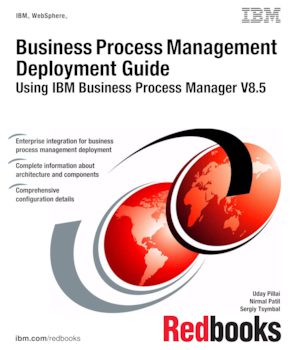
Published on 15 January 2014
Order hardcopy
Share this page:
ISBN-10: 0738438944
ISBN-13: 9780738438948
IBM Form #: SG24-8175-00
Authors: Uday Pillai, Nirmal Patil and Sergiy Tsymbal
Abstract
IBM® Business Process Manager (BPM) provides a platform that helps process participants gain enterprise-wide visibility of business processes so that improvements can be made by those who know these processes best. IBM BPM encourages collaboration and supports strong governance of process change. It provides a common software platform for process improvement and IBM BPM lifecycle governance, offering the power and robustness that is required for mission-critical enterprise solutions while combining the simplicity that is required for business engagement through collaboration. Built-in analytics and search capabilities help improve and optimize business processes now and in the future.
This IBM Redbooks® publication provides an introduction to designing and building IBM Business Process Manager V8.5 environments. The target audience for this book includes IT architects, IT specialists, and consultants who are seeking to understand and implement IBM BPM environments.
This book introduces the changes and new features in IBM Business Process Manager V8.5 and provides an overview of the basic topology and components. Detailed and step-by-step instructions to prepare, build, and verify your environment, including proxy server configuration, also are described.
The book also provides an overview of a consolidated migration approach that was introduced in V8.5. It describes tools and utilities that are available for migrating from the previous version of the product to V8.5. Two step-by-step migration scenarios are described to help you better understand the detailed migration activities that are required for IBM BPM Standard and Advanced.
Table of Contents
Chapter 1. Overview of IBM Business Process Manager V8.5
Chapter 2. What is new in IBM Business Process Manager version 8.5
Chapter 3. Components, topologies, and deployment environment patterns types
Chapter 4. Preparing your infrastructure
Chapter 5. Deploying an IBM Business Process Manager environment
Chapter 6. Installing and configuring IBM HTTP Server
Chapter 7. Post-installation configuration
Chapter 8. Verification
Chapter 9. Overview of migration
Appendix A. Additional material